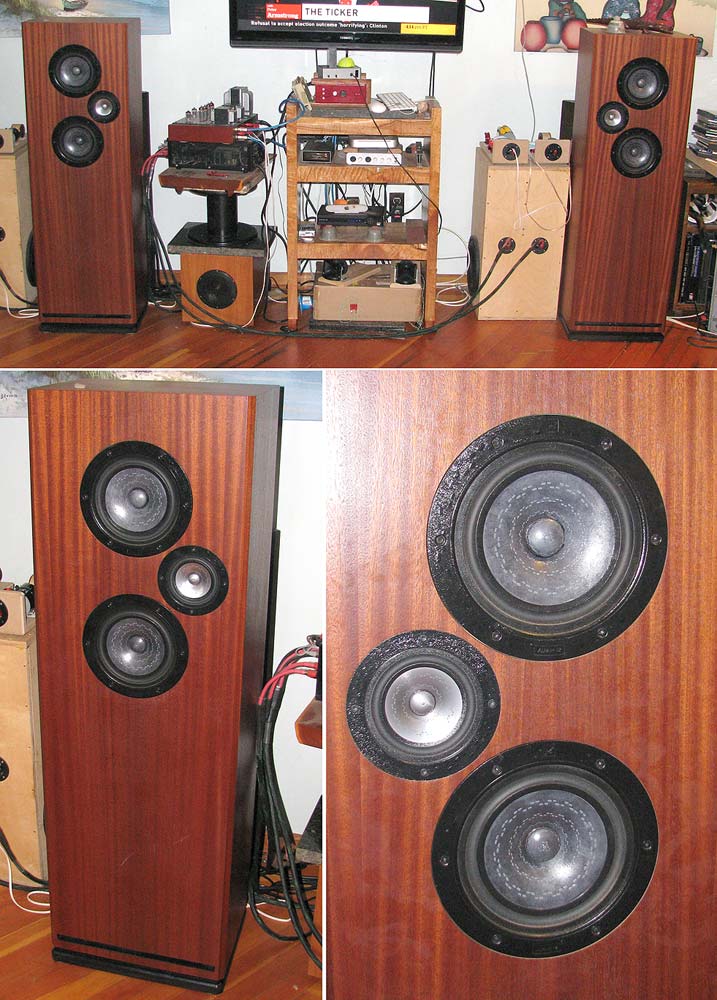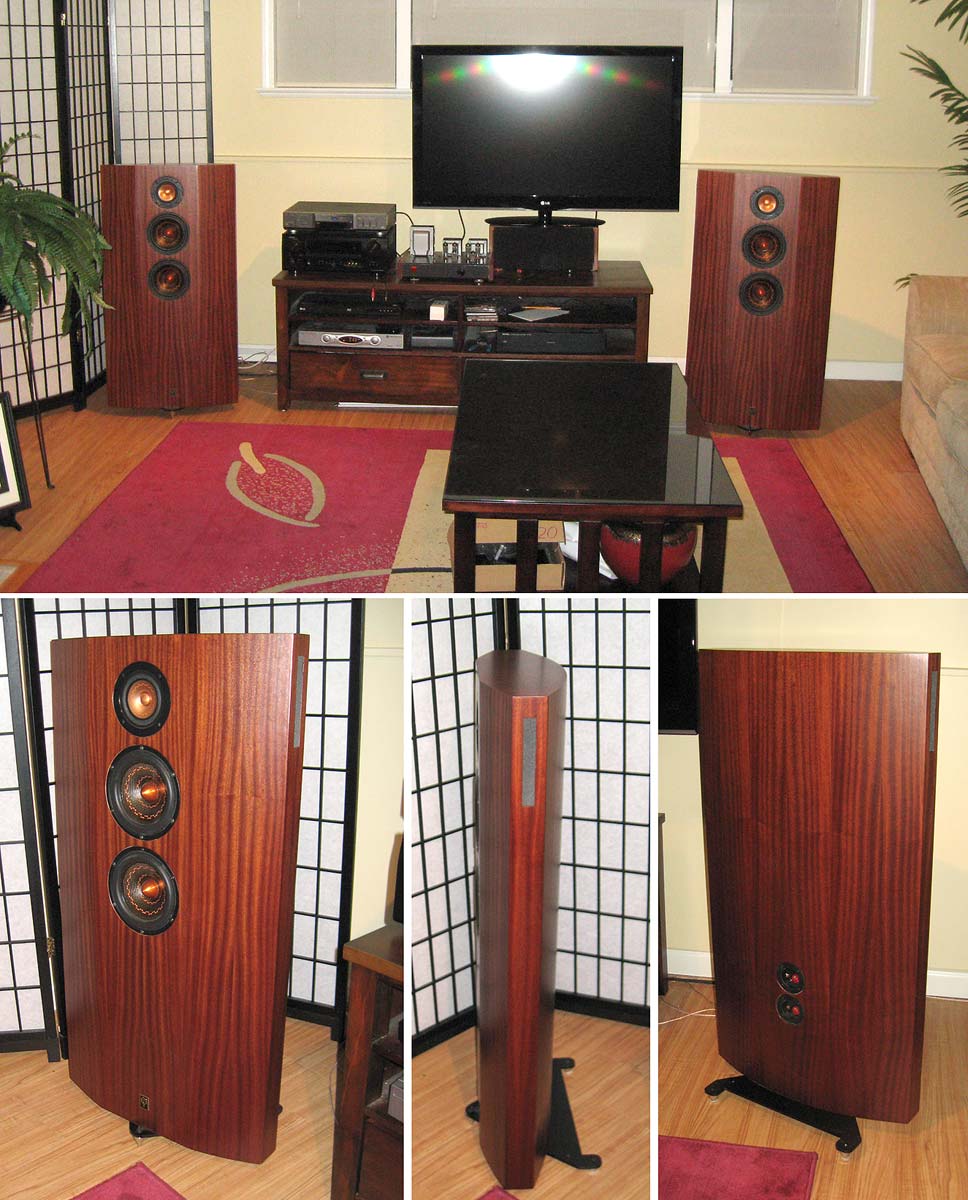There seems to be different camps here, some listeners must have huge diaphragms for midrange use for a natural sound, and others wants small diaphragms for the same reson. What compomises are you thinking of?
In general, a large diaphram will move more air more easily so will play louder and potentially have greater “dynamic” impact. A smaller cone will typically have better dispersion aand mid/HF response.
The exact details of course are in the execution of the drive unit. Balancing these with my personal preferences (compromises i can most easily live with), is the Alpair 7.3eN (or A7 MAOP (very rare)). The new Alpai r7ms with no spider looks even more interesting, particualrily as a mid (or midTweeter). Here an example of a speaker that turned out fantastic based on the A7.3eN.

And an earlier one (same midTweet, different woofers). These are cosmetically more interesting (and the width allows a lower XO), but much harder to build and the midwoofers do not blend quite as well with the midTweeter as the Alpair woofers in the other.

dave
Pros:And what are you opinion about midrange domes?
-Motors generally designed for smaller xmax - higher sensitivity and lower distortion in the upper mid / lower treble (800Hz-3kHz)
-Smaller radiating area - better off-axis response, breakup nodes pushed to higher frequencies
Cons:
-Smaller xmax, smaller suspension, smaller radiating area - distortion becomes a problem below ~800Hz when 2" domes are pushed to high volume levels (>100dB). ~500Hz for 3" domes.
-The faceplates can be as large as a 4-5" cone driver which limits how high you should cross to the tweeter due to centre-to-centre spacing. There are several 2" domes that by themselves are good to say 5-6kHz, but probably shouldn't be crossed higher than 3kHz due to the size of the faceplate.
Generally you are going to find that a dome is going to demand a much higher lower crossover point than a cone driver of similar overall size, and a lower upper crossover point than a cone driver of similar diaphragm size.
The sensitivity is generally much higher allowing it to integrate with larger woofers. E.g. 3" cone drivers are generally about 85dB which might not be sensitive enough to match to dual 6.5/7" woofers even with full baffle step compensation. 2" domes are about 90dB which gives you a few dB headroom work with to design the crossover with dual 6.5" and might even be able to stretch to match levels with dual 8" woofers.
For 'full range' use I think 3.5-4.5" cone drivers are the sweet spot. This gives you enough cone area and excursion to be useful down to a frequency where a sub(s) can take over, yet the cone breakup and off axis response doesn't make them unusable up high like it would on a 5.5"+ driver.
Last edited:
In general, a large diaphram will move more air more easily so will play louder and potentially have greater “dynamic” impact. A smaller cone will typically have better dispersion aand mid/HF response.
The exact details of course are in the execution of the drive unit. Balancing these with my personal preferences (compromises i can most easily live with), is the Alpair 7.3eN (or A7 MAOP (very rare)). The new Alpai r7ms with no spider looks even more interesting, particualrily as a mid (or midTweeter). Here an example of a speaker that turned out fantastic based on the A7.3eN.

And an earlier one (same midTweet, different woofers). These are cosmetically more interesting (and the width allows a lower XO), but much harder to build and the midwoofers do not blend quite as well with the midTweeter as the Alpair woofers in the other.

dave
nice speakers! i have just rediscovered the mtm array after having dimissed them before. i am not sure if is the increased cone area or the somewhat limited vertical dispersion, or both, that i find so pleasing, but the focus of the sound is just stunning.
Pros:
-Motors generally designed for smaller xmax - higher sensitivity and lower distortion in the upper mid / lower treble (800Hz-3kHz)
-Smaller radiating area - better off-axis response, breakup nodes pushed to higher frequencies
Cons:
-Smaller xmax, smaller suspension, smaller radiating area - distortion becomes a problem below ~800Hz when 2" domes are pushed to high volume levels (>100dB). ~500Hz for 3" domes.
-The faceplates can be as large as a 4-5" cone driver which limits how high you should cross to the tweeter due to centre-to-centre spacing. There are several 2" domes that by themselves are good to say 5-6kHz, but probably shouldn't be crossed higher than 3kHz due to the size of the faceplate.
Generally you are going to find that a dome is going to demand a much higher lower crossover point than a cone driver of similar overall size, and a lower upper crossover point than a cone driver of similar diaphragm size.
The sensitivity is generally much higher allowing it to integrate with larger woofers. E.g. 3" cone drivers are generally about 85dB which might not be sensitive enough to match to dual 6.5/7" woofers even with full baffle step compensation. 2" domes are about 90dB which gives you a few dB headroom work with to design the crossover with dual 6.5" and might even be able to stretch to match levels with dual 8" woofers.
For 'full range' use I think 3.5-4.5" cone drivers are the sweet spot. This gives you enough cone area and excursion to be useful down to a frequency where a sub(s) can take over, yet the cone breakup and off axis response doesn't make them unusable up high like it would on a 5.5"+ driver.
in many ways midrange domes seems to be inferior to a midrange cone driver but still so many seems to favour them, this interests me
dome mids in a mtm setup would be a nice project to evaluate 🙂
nice speakers! i have just rediscovered the mtm array after having dimissed them before.
The low XO gets around the usual MTM issue that causes the limited vertical dispersion. Since the XO is below the quarter wavelength of the centre-to-centre distance of the drivers, they are essentially coincident and the dispersion issues go away (and it becomes fairly simple to get phase coherency).
dave
Damn, the Peerless Tymphany is out of stock for quite some time. Now looking at alternates Fountek and Dynavox
Dynavox LY302F 3-1/2" Full-Range Driver
..though the smaller diameter SB Acoustics drivers would be better for your application.
..though the smaller diameter SB Acoustics drivers would be better for your application.
Last edited:
Dynavox LY302F 3-1/2" Full-Range Driver
..though the smaller diameter SB Acoustics drivers would be better for your application.
you wouldn't be referring to the 2 1/2 inch unit would you? That seems so small to be any good lol.
you wouldn't be referring to the 2 1/2 inch unit would you? That seems so small to be any good lol.
-and yet its performance is excellent, and with 4 drive units: very well suited to your design (..well, unless you have a slow roll-off high pass filter around 250 Hz.)
https://www.diyaudio.com/forums/multi-way/348122-4-inch-driver-recommendation-2.html#post6045921
..if you move the low-pass point to around 4 khz, then 4x 3 1/2" Dynavox would be (overall) better.
Last edited:
- Home
- Loudspeakers
- Multi-Way
- 4 inch driver recommendation